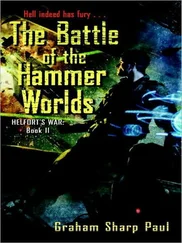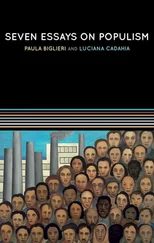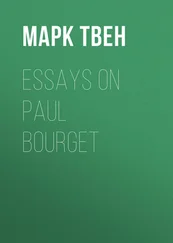Paul Graham - Essays
Здесь есть возможность читать онлайн «Paul Graham - Essays» весь текст электронной книги совершенно бесплатно (целиком полную версию без сокращений). В некоторых случаях можно слушать аудио, скачать через торрент в формате fb2 и присутствует краткое содержание. Жанр: Прочая околокомпьтерная литература, на английском языке. Описание произведения, (предисловие) а так же отзывы посетителей доступны на портале библиотеки ЛибКат.
- Название:Essays
- Автор:
- Жанр:
- Год:неизвестен
- ISBN:нет данных
- Рейтинг книги:4 / 5. Голосов: 1
-
Избранное:Добавить в избранное
- Отзывы:
-
Ваша оценка:
- 80
- 1
- 2
- 3
- 4
- 5
Essays: краткое содержание, описание и аннотация
Предлагаем к чтению аннотацию, описание, краткое содержание или предисловие (зависит от того, что написал сам автор книги «Essays»). Если вы не нашли необходимую информацию о книге — напишите в комментариях, мы постараемся отыскать её.
Essays — читать онлайн бесплатно полную книгу (весь текст) целиком
Ниже представлен текст книги, разбитый по страницам. Система сохранения места последней прочитанной страницы, позволяет с удобством читать онлайн бесплатно книгу «Essays», без необходимости каждый раз заново искать на чём Вы остановились. Поставьте закладку, и сможете в любой момент перейти на страницу, на которой закончили чтение.
Интервал:
Закладка:
One solution to this is what I call degeneration. If you can't find an exact match for a token, treat it as if it were a less specific version. I consider terminal exclamation points, uppercase letters, and occurring in one of the five marked contexts as making a token more specific. For example, if I don't find a probability for ``Subject*free!'', I look for probabilities for ``Subject*free'', ``free!'', and ``free'', and take whichever one is farthest from .5.
Here are the alternatives [7] considered if the filter sees ``FREE!!!'' in the Subject line and doesn't have a probability for it.
Subject*Free!!! Subject*free!!! Subject*FREE! Subject*Free! Subject*free! Subject*FREE Subject*Free Subject*free FREE!!! Free!!! free!!! FREE! Free! free! FREE Free free
If you do this, be sure to consider versions with initial caps as well as all uppercase and all lowercase. Spams tend to have more sentences in imperative mood, and in those the first word is a verb. So verbs with initial caps have higher spam probabilities than they would in all lowercase. In my filter, the spam probability of ``Act'' is 98% and for ``act'' only 62%.
If you increase your filter's vocabulary, you can end up counting the same word multiple times, according to your old definition of ``same''. Logically, they're not the same token anymore. But if this still bothers you, let me add from experience that the words you seem to be counting multiple times tend to be exactly the ones you'd want to.
Another effect of a larger vocabulary is that when you look at an incoming mail you find more interesting tokens, meaning those with probabilities far from .5. I use the 15 most interesting to decide if mail is spam. But you can run into a problem when you use a fixed number like this. If you find a lot of maximally interesting tokens, the result can end up being decided by whatever random factor determines the ordering of equally interesting tokens. One way to deal with this is to treat some as more interesting than others.
For example, the token ``dalco'' occurs 3 times in my spam corpus and never in my legitimate corpus. The token ``Url*optmails'' (meaning ``optmails'' within a url) occurs 1223 times. And yet, as I used to calculate probabilities for tokens, both would have the same spam probability, the threshold of .99.
That doesn't feel right. There are theoretical arguments for giving these two tokens substantially different probabilities (Pantel and Lin do), but I haven't tried that yet. It does seem at least that if we find more than 15 tokens that only occur in one corpus or the other, we ought to give priority to the ones that occur a lot. So now there are two threshold values. For tokens that occur only in the spam corpus, the probability is .9999 if they occur more than 10 times and .9998 otherwise. Ditto at the other end of the scale for tokens found only in the legitimate corpus.
I may later scale token probabilities substantially, but this tiny amount of scaling at least ensures that tokens get sorted the right way.
Another possibility would be to consider not just 15 tokens, but all the tokens over a certain threshold of interestingness. Steven Hauser does this in his statistical spam filter [8]. If you use a threshold, make it very high, or spammers could spoof you by packing messages with more innocent words.
Finally, what should one do about html? I've tried the whole spectrum of options, from ignoring it to parsing it all. Ignoring html is a bad idea, because it's full of useful spam signs. But if you parse it all, your filter might degenerate into a mere html recognizer. The most effective approach seems to be the middle course, to notice some tokens but not others. I look at a, img, and font tags, and ignore the rest. Links and images you should certainly look at, because they contain urls.
I could probably be smarter about dealing with html, but I don't think it's worth putting a lot of time into this. Spams full of html are easy to filter. The smarter spammers already avoid it. So performance in the future should not depend much on how you deal with html.
Between December 10 2002 and January 10 2003 I got about 1750 spams. Of these, 4 got through. That's a filtering rate of about 99.75%.
Two of the four spams I missed got through because they happened to use words that occur often in my legitimate email.
The third was one of those that exploit an insecure cgi script to send mail to third parties. They're hard to filter based just on the content because the headers are innocent and they're careful about the words they use. Even so I can usually catch them. This one squeaked by with a probability of .88, just under the threshold of .9.
Of course, looking at multiple token sequences would catch it easily. ``Below is the result of your feedback form'' is an instant giveaway.
The fourth spam was what I call a spam-of-the-future, because this is what I expect spam to evolve into: some completely neutral text followed by a url. In this case it was was from someone saying they had finally finished their homepage and would I go look at it. (The page was of course an ad for a porn site.)
If the spammers are careful about the headers and use a fresh url, there is nothing in spam-of-the-future for filters to notice. We can of course counter by sending a crawler to look at the page. But that might not be necessary. The response rate for spam-of-the-future must be low, or everyone would be doing it. If it's low enough, it won't pay for spammers to send it, and we won't have to work too hard on filtering it.
Now for the really shocking news: during that same one-month period I got three false positives.
In a way it's a relief to get some false positives. When I wrote ``A Plan for Spam'' I hadn't had any, and I didn't know what they'd be like. Now that I've had a few, I'm relieved to find they're not as bad as I feared. False positives yielded by statistical filters turn out to be mails that sound a lot like spam, and these tend to be the ones you would least mind missing [9].
Two of the false positives were newsletters from companies I've bought things from. I never asked to receive them, so arguably they were spams, but I count them as false positives because I hadn't been deleting them as spams before. The reason the filters caught them was that both companies in January switched to commercial email senders instead of sending the mails from their own servers, and both the headers and the bodies became much spammier.
The third false positive was a bad one, though. It was from someone in Egypt and written in all uppercase. This was a direct result of making tokens case sensitive; the Plan for Spam filter wouldn't have caught it.
It's hard to say what the overall false positive rate is, because we're up in the noise, statistically. Anyone who has worked on filters (at least, effective filters) will be aware of this problem. With some emails it's hard to say whether they're spam or not, and these are the ones you end up looking at when you get filters really tight. For example, so far the filter has caught two emails that were sent to my address because of a typo, and one sent to me in the belief that I was someone else. Arguably, these are neither my spam nor my nonspam mail.
Another false positive was from a vice president at Virtumundo. I wrote to them pretending to be a customer, and since the reply came back through Virtumundo's mail servers it had the most incriminating headers imaginable. Arguably this isn't a real false positive either, but a sort of Heisenberg uncertainty effect: I only got it because I was writing about spam filtering.
Not counting these, I've had a total of five false positives so far, out of about 7740 legitimate emails, a rate of .06%. The other two were a notice that something I bought was back-ordered, and a party reminder from Evite.
Читать дальшеИнтервал:
Закладка:
Похожие книги на «Essays»
Представляем Вашему вниманию похожие книги на «Essays» списком для выбора. Мы отобрали схожую по названию и смыслу литературу в надежде предоставить читателям больше вариантов отыскать новые, интересные, ещё непрочитанные произведения.
Обсуждение, отзывы о книге «Essays» и просто собственные мнения читателей. Оставьте ваши комментарии, напишите, что Вы думаете о произведении, его смысле или главных героях. Укажите что конкретно понравилось, а что нет, и почему Вы так считаете.











